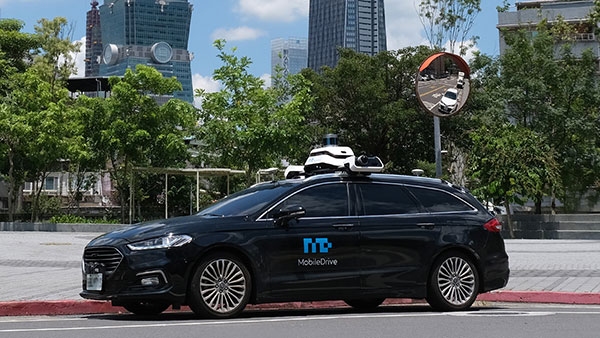MobileDrive Builds Autonomous Driving Systems With Siemens’ Digital Twin
MobileDrive’s ADAS vision and technology roadmap is based on vehicle requirements built using Siemens Xcelerator.

MobileDrive has adopted a model-based systems engineering (MBSE) approach to support its Advanced Driver Assistance Systems (ADAS) development, using the Siemens Xcelerator portfolio and its comprehensive digital twin technology. Image courtesy of MobileDrive.
Latest News
March 24, 2023
Siemens Digital Industries Software reports that MobileDrive has adopted a model-based systems engineering (MBSE) approach to support its Advanced Driver Assistance Systems (ADAS) development, using the Siemens Xcelerator portfolio and its digital twin technology. By leveraging Siemens’ expertise in the digital thread, MobileDrive has accelerated its progress to build next-generation autonomous driving systems, the company reports.
Founded in 2021 as a joint venture between two mobility technology leaders, FIH Mobile and Stellantis, MobileDrive is focused on developing infotainment, telematics and a cloud service platform, together with ancillary hardware and software. Combining innovation capabilities with over 15 years software/hardware integration experience, MobileDrive is a Taiwan-based company capable of providing complete in-vehicle solutions with cutting-edge AI technology.
MobileDrive’s primary interest was to use a model-based framework to develop the algorithms and software controls for common and advanced ADAS applications, such as Lane Keep Assist (LKA), Emergency Lane Keeping (ELK), Lane Following Control (LFC), Auto Lane Change (ALC), Emergency Steering Assist (ESA), and Autonomous Emergency Steering (AES).
Siemens’ Simcenter Engineering and Consulting services team worked with MobileDrive to deliver a methodology and roadmap for its ADAS vision while developing the control algorithms and building a detailed scenario-based system model including sensors and vehicle dynamics, based on full vehicle requirements using the Siemens Xcelerator portfolio of software and services.
This systems model was then applied to virtual test environment allowing the MobileDrive team to observe vehicles as a true digital twin to uncover and address system and software performance issues earlier in the development cycle.
MobileDrive realized an effective software development process before a physical prototype was built. This was due to the ability to verify ADAS software features early in the digital twin environment, reducing the effort of hardware-in-the-loop (HiL) and vehicle testing.
“The automotive industry is undergoing major transformations to better satisfy the needs of users in diverse scenarios and enable a more intuitive, seamless in-vehicle user experience and we have established the key sophisticated technologies and actively collaborated with reliable partners,” says Winston Hsu, chief technical officer at MobileDrive. “Thanks to our collaboration with Siemens, we are able to bring our products to market in a much more streamlined, efficient manner.”
Sources: Press materials received from the company and additional information gleaned from the company’s website.
More Siemens Digital Industries Software Coverage
Subscribe to our FREE magazine, FREE email newsletters or both!
Latest News
About the Author
DE’s editors contribute news and new product announcements to Digital Engineering.
Press releases may be sent to them via DE-Editors@digitaleng.news.




